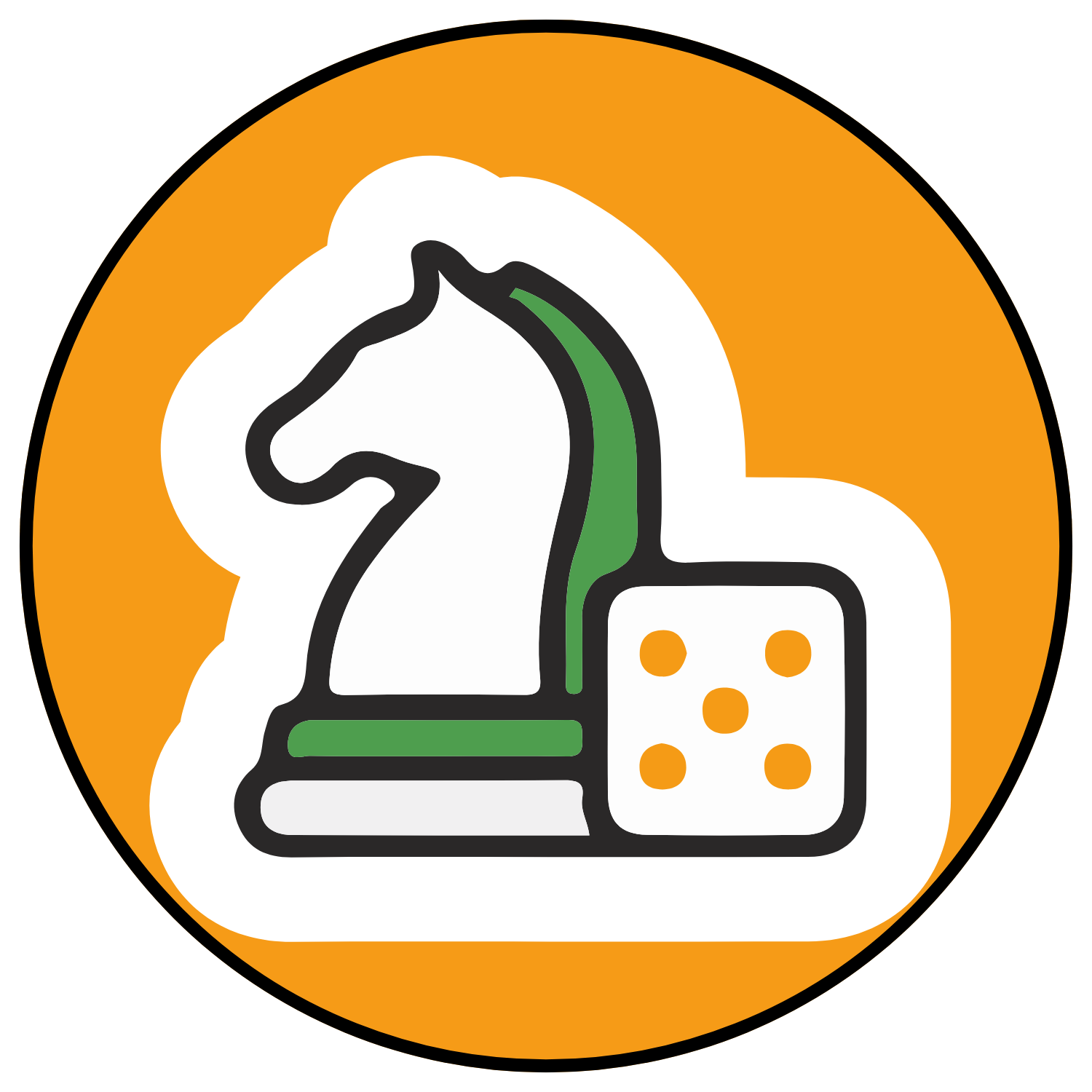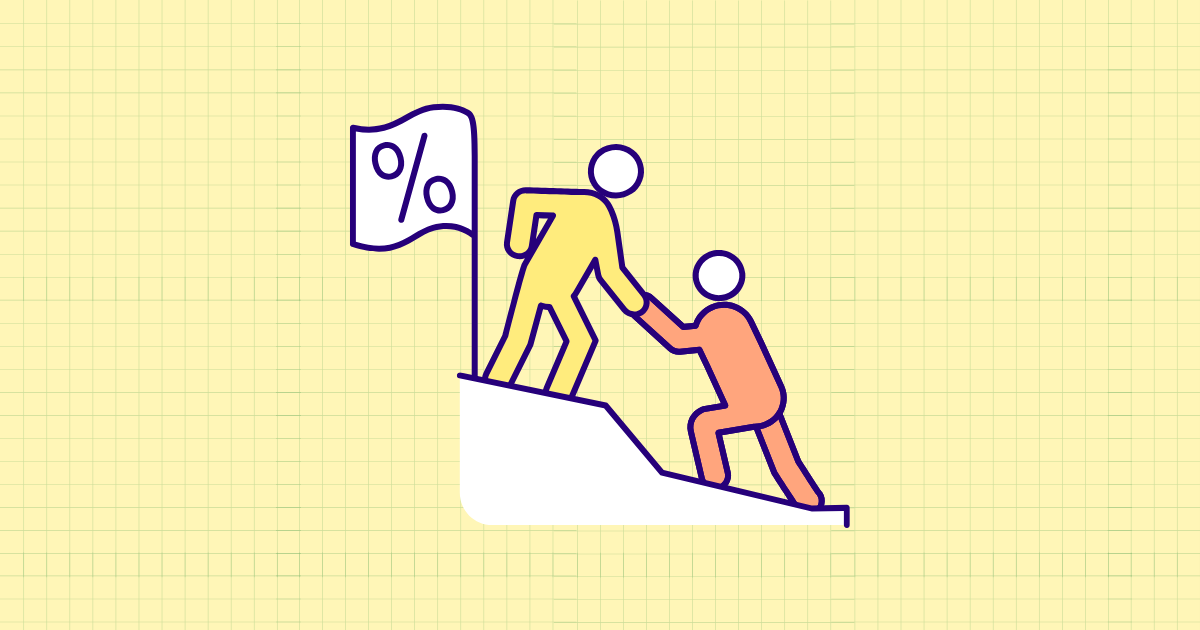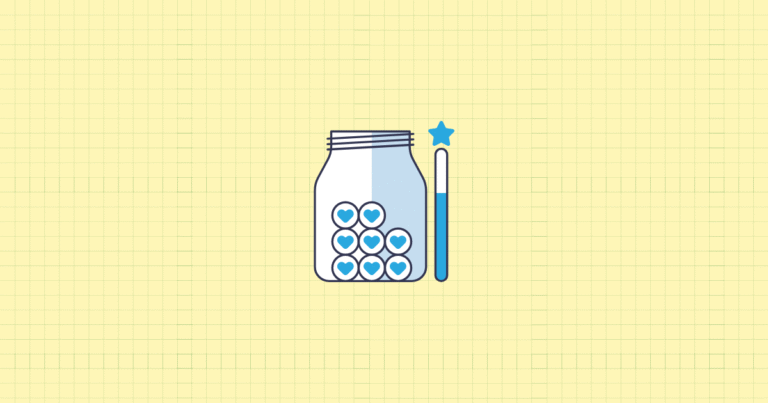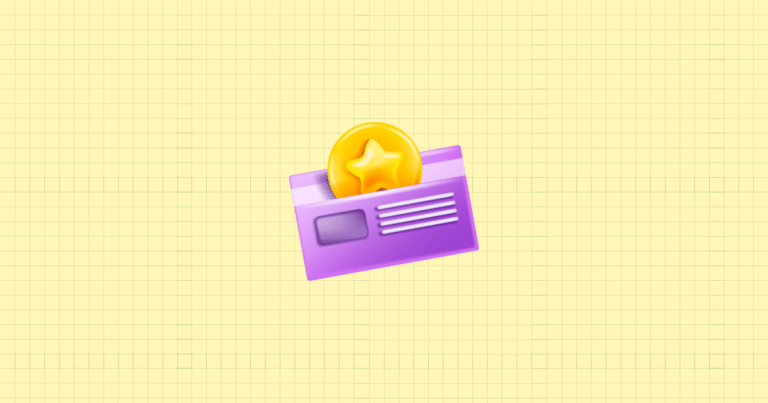Ever notice how certain stores keep pulling you back, time and again? It’s rarely an accident. Behind every successful Shopify loyalty program lies a sophisticated understanding of what makes customers tick—what truly drives them to return, engage, and advocate for your brand. And the financial stakes couldn’t be higher.
Consider this eye-opening reality: just 8% of your customers typically generate a whopping 41% of your revenue. These high-value customers aren’t just casual shoppers—they’re the backbone of your business. But here’s what many store owners miss: loyalty isn’t simply about offering discounts. It’s about tapping into fundamental human psychology.
In today’s fiercely competitive e-commerce landscape, where one-click comparison shopping is the norm, psychological connection has become the ultimate differentiator. Over 70% of online shoppers specifically seek out stores offering loyalty programs. Yet many programs fail because they focus exclusively on transactions while ignoring the underlying psychological triggers that actually drive customer behavior.
Throughout this guide, we’ll dig deep into the psychology that powers truly effective loyalty programs. You’ll discover how concepts like reward psychology, loss aversion, and social belonging can transform casual shoppers into passionate brand advocates. More importantly, you’ll learn exactly how to implement these principles in your Shopify store—regardless of your size or niche.
The Importance of Customer Retention for Shopify Stores
Let’s start with a reality check: acquiring a new customer costs anywhere from 5 to 25 times more than retaining an existing one. This isn’t just about saving marketing dollars—it’s about building sustainable growth in an increasingly expensive digital advertising landscape.
Repeat customers spend 67% more than new customers, on average. They require less convincing, less handholding, and generate fewer support tickets. They already trust you. The relationship is established. When you understand the psychology driving their loyalty, you can strengthen these connections systematically rather than hoping for random repeat purchases.
Beyond immediate sales, loyal customers bring another tremendous benefit: they become your most credible marketers. A genuinely satisfied, emotionally connected customer doesn’t just make repeat purchases—they bring friends. They leave glowing reviews. They defend your brand against critics. In essence, they amplify everything your marketing department is trying to accomplish, but with significantly more authenticity.
The Intersection of Psychology and Loyalty Programs
What separates truly effective loyalty programs from mediocre ones? The answer lies in understanding human behavior at a fundamental level. The best loyalty programs aren’t mere discount schemes—they’re carefully crafted psychological frameworks that align with how people actually make decisions.
Think about the last time you felt genuinely loyal to a brand. Was it purely because of the discounts? Unlikely. More probably, something about the experience resonated with you emotionally. Maybe you felt recognized. Perhaps you enjoyed a sense of belonging to an exclusive group. Or possibly, you simply felt good about supporting that particular business.
These emotional connections stem from deep-seated psychological needs—for recognition, belonging, achievement, and value. When your loyalty program addresses these fundamental needs rather than merely offering transactional benefits, you create relationships that competitors simply can’t match with price cuts alone.
The science behind customer motivation reveals something fascinating: people rarely make purely rational, calculated decisions. Instead, we operate through a complex mix of emotional responses, cognitive biases, and social influences. By understanding these hidden drivers, you can design a loyalty program that connects with customers at a level far deeper than their wallets.
Fundamental Psychological Principles Driving Loyalty Program Success
Now that we understand why psychology matters in loyalty programs, let’s examine the core principles that influence customer behavior. These aren’t merely theoretical concepts—they’re actionable insights you can implement in your Shopify store starting today.
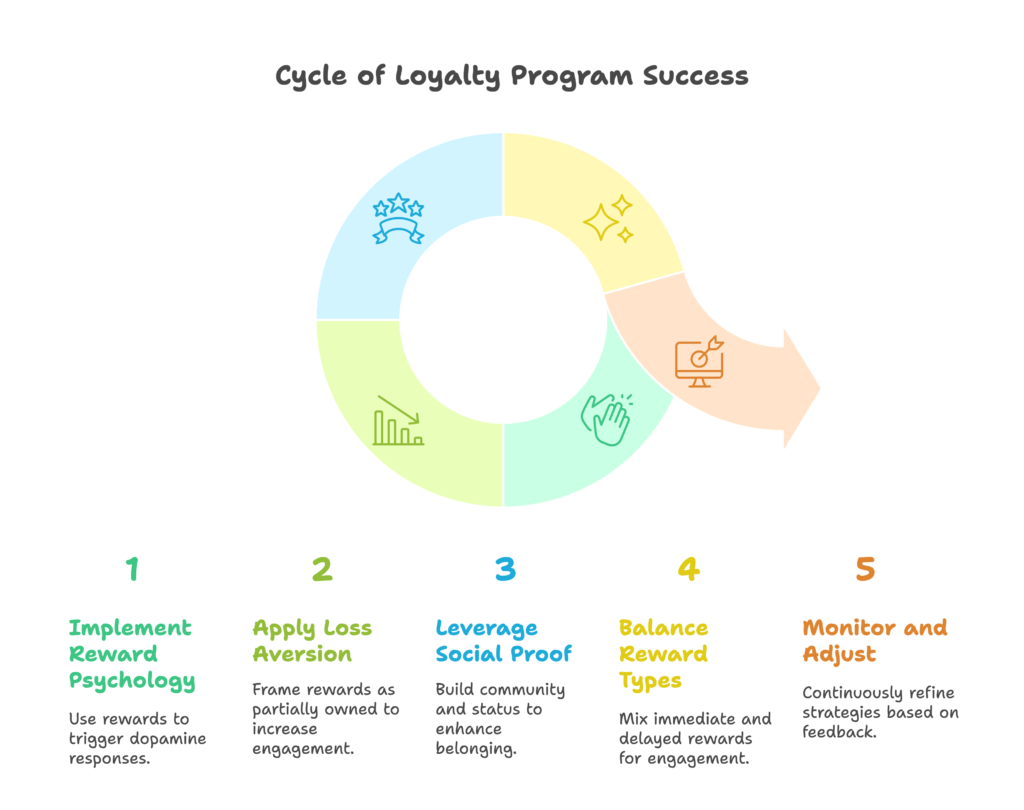
Reward Psychology and Positive Reinforcement
At its core, reward psychology taps into one of our brain’s most powerful mechanisms: the dopamine response. When customers receive rewards—whether points, discounts, or exclusive access—their brains literally release dopamine, creating a pleasant sensation associated with your brand. This neurological response helps explain why properly structured rewards can create such powerful shopping habits.
But not all rewards trigger the same psychological response. Consider these distinct types:
- Monetary rewards (discounts, cashback) provide clear, tangible value but can sometimes reduce your brand to a purely transactional relationship.
- Experiential rewards (early access, exclusive events) often create stronger emotional connections and memorable brand associations.
- Status rewards (VIP tiers, recognition) satisfy our deep psychological need for acknowledgment and achievement.
The timing of rewards also significantly impacts their effectiveness. Immediate rewards (instant discounts) create clear cause-and-effect relationships—”I bought, I got rewarded.” These work well for new program members. Delayed rewards (points accumulation) leverage our anticipation systems—the pleasure of working toward something valuable. This approach often leads to more sustained engagement.
A skillfully designed program balances both immediate gratification and long-term reward structures. For example, you might offer a small welcome discount (immediate) alongside a points system that unlocks progressively more valuable benefits (delayed).
Loss Aversion and the Endowment Effect
Here’s a psychological insight that might transform how you view your loyalty program: people feel the pain of losing something roughly twice as strongly as they feel the pleasure of gaining something equivalent. This phenomenon, known as loss aversion, is a powerful motivator you can ethically leverage.
Consider how differently these two messages feel:
- “Earn 500 points and get $25 off your next purchase!”
- “You’ve already earned 300 points! Don’t miss out on the $25 reward—you’re just 200 points away!”
The second message triggers loss aversion by framing the unclaimed reward as something the customer already partially owns and risks losing. This subtle shift can dramatically increase program engagement.
Closely related is the endowment effect—our tendency to value things more highly once we feel we own them. Once customers accumulate points in your program, those points psychologically become “their property.” This creates a powerful motivation to preserve and use them, even when their actual cash value might be modest.
Smart Shopify merchants apply these principles by:
- Creating point expiration policies that encourage regular engagement
- Sending timely reminders about “at-risk” points or status levels
- Showing progress toward rewards visually (we’ll discuss this more in the gamification section)
- Offering “point-rescue” promotions for customers with expiring benefits
The key is striking a balance—creating enough urgency to motivate action without generating frustration. Well-designed loss aversion tactics feel helpful rather than manipulative.
Social Proof and Belonging
Humans are fundamentally social creatures. We look to others for cues about what’s valuable, desirable, and worth our attention. This psychological trait explains why social proof and community belonging can transform a typical loyalty program into a powerful retention machine.
Consider these social dynamics that elevate loyalty programs:
- Community identification: When customers feel they belong to an exclusive “club” of like-minded people who share their values and interests
- Status signaling: The ability to display one’s loyalty status to others (think airline priority boarding, where the benefit isn’t just boarding early—it’s being seen boarding early)
- Social validation: Seeing others actively engaging with and benefiting from your loyalty program
For Shopify merchants, practical applications include:
- Creating visible tier systems with appealing names that confer status (Bronze, Silver, Gold → Insider, VIP, Elite)
- Facilitating community interaction among members (exclusive Facebook groups, members-only comments)
- Highlighting member counts (“Join over 10,000 Smart Shoppers in our rewards program”)
- Enabling social sharing of achievements and rewards
- Featuring testimonials specifically about the loyalty program experience
The most powerful loyalty programs transform transactional relationships into genuine communities. When customers feel they’re part of something larger than a simple buying arrangement, their loyalty transcends rational cost-benefit calculations. They stick with you because it feels good to belong.
Designing Psychologically Effective Loyalty Programs for Shopify
Understanding psychological principles is one thing—effectively implementing them in your Shopify store is another. Let’s explore practical approaches to creating loyalty programs that truly resonate with how your customers think and feel.
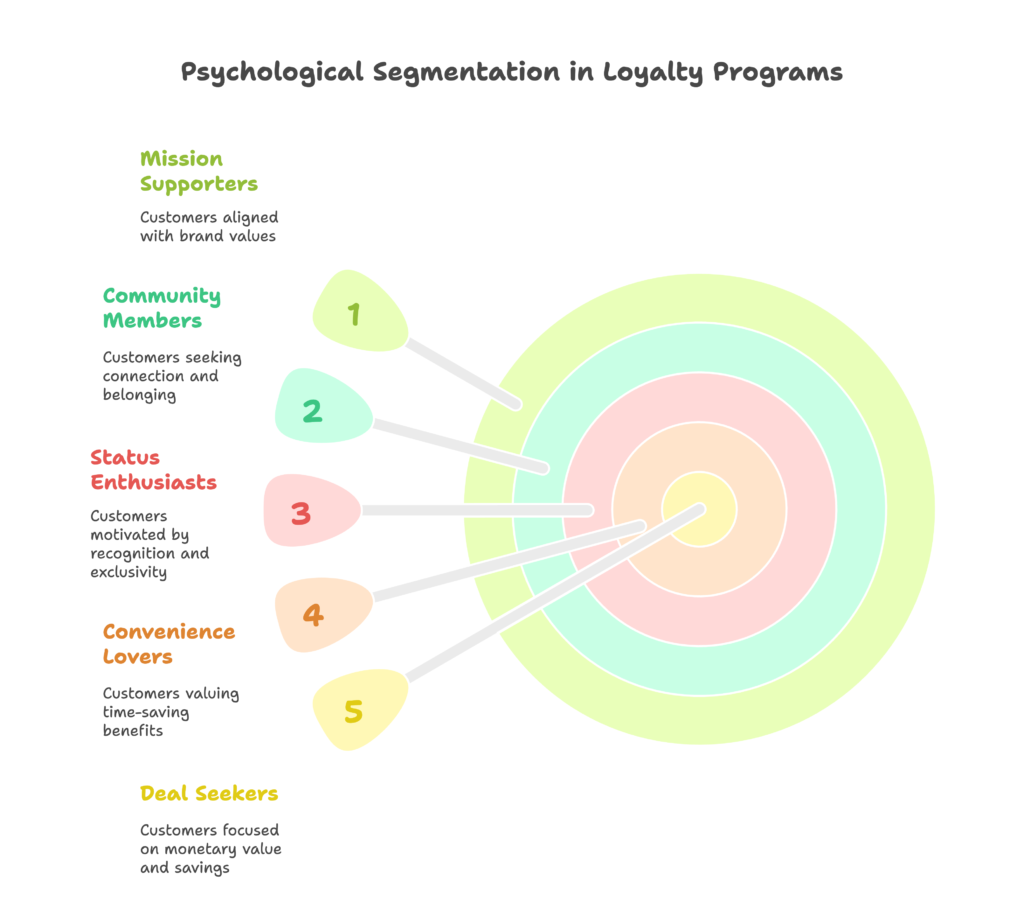
Segmentation-Based Program Structures
Not all customers are motivated by the same psychological triggers. A one-size-fits-all loyalty program inevitably leaves money on the table by failing to address diverse motivational profiles. This is where psychological segmentation becomes invaluable.
Consider these common customer motivation profiles:
- Deal Seekers: Primarily motivated by monetary value and maximizing their savings
- Convenience Lovers: Value time-saving benefits and frictionless experiences over pure savings
- Status Enthusiasts: Strongly motivated by recognition, exclusivity, and visible membership tiers
- Community Members: Seek belonging and connection with like-minded people who share their interests
- Mission Supporters: Align with brands based on shared values and ethical considerations
Your loyalty program can accommodate these different profiles through tiered structures that offer varied benefits. For example:
- Entry-level tiers might focus on simple monetary rewards to appeal to deal seekers
- Mid-level tiers could add convenience benefits like free shipping or priority support
- Upper tiers might emphasize status markers, exclusive experiences, and community access
This approach allows customers to self-select into the program aspects that most resonate with their psychological preferences. It also creates natural progression paths that encourage increased engagement over time.
For Shopify stores, implementation might involve using apps that support segmented communications and varied reward structures. The key is ensuring customers clearly understand the benefits available at each tier and the specific actions required to advance.
Gamification Elements That Drive Engagement
Gamification leverages our intrinsic enjoyment of challenges, achievements, and visible progress. When skillfully integrated into your loyalty program, these elements can transform routine shopping into a genuinely engaging experience.
Key gamification components to consider include:
- Progress visualization: Graphical representations of advancement toward goals (progress bars, milestone markers)
- Achievement badges: Visual symbols recognizing specific accomplishments (first purchase, fifth review, annual member)
- Challenges and missions: Time-limited activities that encourage specific behaviors (“Complete these three actions this week for bonus rewards”)
- Leaderboards: Where appropriate, showing top members to foster friendly competition
- Level-up celebrations: Special acknowledgments when customers reach new tiers or milestones
The psychological power of these elements comes from our natural completionist tendencies—we dislike leaving things unfinished. A progress bar showing we’re 60% toward a reward creates a subtle psychological tension that motivates us to reach completion.
Similarly, visible achievements trigger our innate desire for mastery and recognition. Collecting badges or completing challenges provides intrinsic satisfaction beyond the tangible rewards.
In your Shopify store, effective implementation might include:
- Email notifications when customers are close to unlocking new rewards
- Visual progress indicators on your customer account pages
- Special icons next to customer names to indicate status
- Celebratory animations when achievements are unlocked
The most effective gamification feels natural rather than forced. It should enhance the customer experience rather than distract from it, creating genuine moments of delight rather than obligation.
Personalization as a Psychological Motivator
Few things trigger positive emotional responses more effectively than feeling truly seen and understood. Personalization speaks directly to our psychological need for recognition and appreciation.
But effective personalization goes far beyond just using a customer’s first name in emails. True psychological personalization requires understanding individual preferences, behaviors, and purchase patterns—then reflecting these insights back to customers in meaningful ways.
Consider these powerful personalization approaches:
- Purchase-history rewards: “Since you’ve purchased coffee from us three times, here’s a special offer on our new bean grinder.”
- Behavioral recognition: “We noticed you often shop during evening hours, so here’s an exclusive night-owl discount.”
- Milestone acknowledgments: Celebrating anniversaries of first purchases or loyalty program enrollment
- Preference-based recommendations: Customized reward suggestions based on past redemption patterns
- Tailored challenges: Creating personalized missions aligned with individual shopping habits
For Shopify merchants, implementing this level of personalization typically requires:
- Robust data collection through your loyalty program app
- Integration between your loyalty platform and email marketing system
- Regular analysis of customer segments and behaviors
- Creating automated but authentic-feeling recognition moments
The psychological impact of well-executed personalization is profound. When customers feel a brand genuinely understands their preferences and values their business, the emotional connection transcends transactional considerations. They stop comparing prices and start valuing the relationship itself.
Implementing Psychological Triggers in Shopify Loyalty Programs
With a solid understanding of the psychological principles and design concepts, let’s explore how to actually implement these triggers in your Shopify loyalty program. The right implementation turns theory into revenue-generating reality.

Points Systems and Reward Structures
The humble points system remains the backbone of most loyalty programs, but its psychological effectiveness depends entirely on how you structure it. Here are key considerations for creating a points system that genuinely motivates:
Point Valuation Psychology
The relationship between points and monetary value significantly impacts how customers perceive your program. Consider these approaches:
- 1:1 valuation (1 point = $0.01): Simple to understand but lacks psychological appeal
- Inflated valuation (100 points = $1): Creates larger numbers that feel more rewarding to accumulate
- Round milestone redemption (500 points = $5 reward): Leverages our attraction to round numbers and clear goals
Interestingly, research shows that customers often perceive higher value in programs with slightly inflated point systems, even when the actual monetary value is identical. The psychological satisfaction of earning “500 points” often exceeds that of earning “$5 in rewards”—despite being economically equivalent.
Multi-Action Reward Mechanisms
Sophisticated loyalty programs recognize that customer value extends beyond purchases. Consider rewarding these high-value behaviors:
- Account creation and profile completion
- Social media follows and shares
- Product reviews and photo submissions
- Referrals of new customers
- Participation in surveys or feedback sessions
- Opening and engaging with emails
By rewarding these actions, you create multiple engagement pathways and reinforce behaviors that benefit your business beyond immediate sales. The key is balancing the points awarded with the actual value each action generates for your business.
For Shopify implementation, look for loyalty apps that offer flexible point-earning rules and the ability to reward diverse actions. The technical setup should be straightforward, but the strategic decisions about what to reward and how much require careful consideration of your specific business goals.
Communication Strategies That Leverage Psychology
Even the most brilliantly designed loyalty program will underperform without effective communication. How you frame, time, and deliver your loyalty messaging dramatically impacts its psychological effectiveness.
Framing Benefits to Maximize Perceived Value
The same reward can be presented in multiple ways, each triggering different psychological responses:
- Loss frame: “Don’t miss out on your 500-point reward.”
- Gain frame: “Claim your 500-point reward today.”
- Exclusivity frame: “As a Silver member, you’ve unlocked access to this reward.”
- Progress frame: “You’re halfway to your 1,000-point goal!”
Testing different frames with your specific audience reveals which psychological triggers generate the strongest response. Many merchants find that alternating between frames maintains freshness and prevents message fatigue.
Timing and Frequency Considerations
The psychology of anticipation plays a crucial role in loyalty communications. Consider these strategic approaches:
- Send “almost there” notifications when customers are close to rewards
- Create predictable reward rhythms that customers can anticipate
- Implement surprise “bonus point” periods to create unexpected delight
- Time loyalty reminders to coincide with typical purchase cycles
The frequency of communications requires careful balance. Too few, and your program fades from memory; too many, and you risk creating annoyance that counteracts positive associations. The ideal approach typically involves creating program “touchpoints” that feel helpful rather than pushy.
For Shopify stores, implementation typically involves integrating your loyalty app with your email marketing platform, allowing for triggered messages based on specific customer actions and point thresholds.
Visual Design Elements That Enhance Program Effectiveness
The visual presentation of your loyalty program significantly impacts its psychological effectiveness. Well-designed visual elements can make abstract concepts (like points) feel tangible and rewards feel more attainable.
User Interface Psychology for Loyalty Programs
Consider these visual design principles:
- Color psychology: Using colors that evoke the right emotional responses (blue for trust, gold for premium value)
- Progress visualization: Creating clear visual representations of advancement toward goals
- Visual hierarchy: Ensuring the most motivating elements receive proper emphasis
- Reward imagery: Using appealing visuals to make rewards more concrete and desirable
The placement of loyalty elements within your Shopify store also matters psychologically. Prominent placements (header, floating buttons) increase program visibility but may distract from the shopping experience. Finding the right balance requires testing with your specific audience.
Mobile Optimization for Psychological Engagement
With most Shopify traffic now coming from mobile devices, your loyalty program must be optimized for smaller screens. Mobile optimization isn’t merely a technical consideration—it’s a psychological one.
Mobile users typically have shorter attention spans and less patience for complexity. Effective mobile loyalty experiences focus on:
- Simplified point checking and redemption processes
- Thumb-friendly tap targets for critical actions
- Visually satisfying animations and transitions
- Instant loading of loyalty information
- Clear next steps and calls to action
For Shopify implementation, ensure your selected loyalty app offers a fully responsive experience. Test the customer journey yourself on multiple devices to confirm the program feels intuitive and satisfying across all touchpoints.
Measuring Psychological Effectiveness in Shopify Loyalty Programs
How do you know if your loyalty program is actually working at a psychological level? While traditional metrics like enrollment and redemption rates provide valuable data, truly understanding psychological effectiveness requires more nuanced measurement approaches.
Behavioral Metrics Beyond Basic Enrollment
Look beyond simple participation numbers to examine these behavioral indicators:
- Program engagement frequency: How often customers check their points or status
- Multi-action participation: Percentage of members who engage with various program elements (not just purchases)
- Reward pursuit behavior: Evidence of customers adjusting purchase timing or basket composition to earn specific rewards
- Voluntary program promotion: Members organically sharing or discussing your program without incentives
These metrics indicate psychological investment—customers who aren’t merely enrolled but emotionally connected to your program. Such customers typically demonstrate higher lifetime value and resistance to competitor offers.
Identifying Motivational Shifts Through Data Analysis
Sophisticated analysis can reveal how your loyalty program shifts customer motivations over time:
- Changes in purchase frequency following program milestones
- Evolving response rates to different psychological triggers
- Shifting engagement patterns across customer segments
- Variations in repurchase timing relative to point accumulation thresholds
For example, you might notice that customers within 100 points of a reward threshold shop 30% more frequently than average—strong evidence that your program is creating anticipation-driven motivation.
For Shopify implementation, combine data from your loyalty app with your store analytics. Most dedicated loyalty apps provide their own dashboards, but connecting this data with your broader business metrics yields the most valuable insights.
Testing and Optimization Frameworks
Continuous improvement through systematic testing is essential for maximizing your program’s psychological impact. Consider these testing approaches:
A/B Testing Psychological Elements
- Test different reward structures with segment samples
- Compare response rates to varied messaging frameworks
- Evaluate different visual representations of progress and status
- Analyze engagement with different gamification elements
The key is isolating specific psychological variables rather than changing multiple elements simultaneously. This disciplined approach allows you to identify exactly which psychological triggers resonate most strongly with your unique customer base.
Continuous Improvement Based on Behavioral Insights
Use your testing data to implement a cycle of continuous optimization:
- Regularly review engagement patterns to identify drop-off points
- Conduct targeted customer interviews about program experiences
- Implement feedback loops that capture qualitative insights
- Benchmark your program against evolving industry standards
For Shopify stores, this often means selecting a loyalty app that offers robust analytics and A/B testing capabilities. The most effective optimization comes from combining quantitative data with qualitative customer feedback—understanding not just what is happening but why it’s happening.
Case Studies: Psychological Principles in Successful Shopify Loyalty Programs
Theory becomes clearer through practical examples. Let’s examine how successful Shopify merchants have applied psychological principles in their loyalty programs, with lessons you can adapt for your own store.
Sephora Beauty Insider: Tiered Status and Exclusivity
While Sephora is an enterprise retailer, their psychological approach offers valuable lessons for Shopify merchants of all sizes.
Psychological Analysis of Program Structure
Sephora’s Beauty Insider program exemplifies masterful use of psychological principles:
- Status motivation: Three clearly defined tiers (Insider, VIB, Rouge) create aspirational targets
- Exclusivity psychology: Higher tiers include experiences that can’t simply be purchased (exclusive events, limited products)
- Belonging psychology: Community forums and shared experiences foster identification with the brand
- Choice psychology: Point redemption options include both products and experiences, accommodating different motivational profiles
Perhaps most notably, Sephora balances transactional benefits (discounts, free products) with experiential and status benefits (early access, exclusive events). This multi-dimensional approach addresses diverse psychological needs within their customer base.
Implementation Lessons for Shopify Merchants
You can apply Sephora’s psychological approach even with a much smaller business:
- Create meaningful tier differences that extend beyond discount percentages
- Develop exclusive experiences appropriate to your scale (virtual events, one-on-one consultations)
- Use tier names that reflect your brand personality rather than generic “Bronze/Silver/Gold” labels
- Offer choice in how rewards are redeemed to accommodate different customer preferences
The key takeaway isn’t to copy Sephora’s specific program structure but to understand the psychological principles that make it effective—then adapt those principles to your unique business context.
Points-Based Programs: Balancing Cost and Perceived Value
Points-based loyalty programs remain popular among Shopify merchants for good reason—when designed correctly, they create excellent perceived value at manageable costs.
Psychological Mechanisms in Successful Points Programs
Effective points programs leverage several key psychological mechanisms:
- Accumulation satisfaction: The inherent pleasure of collecting and watching points grow
- Milestone motivation: The increased engagement as customers approach redemption thresholds
- Mental accounting: Customers often mentally separate “points spending” from “real money spending”
- Unexpected bonuses: Surprise point multipliers or bonuses create dopamine-driven excitement
For example, a Shopify jewelry store might implement a standard points system (1 point per dollar) but enhance it with psychologically motivating elements: surprise 3x points on birthdays, limited-time bonus categories, and special point boosters for engagement actions like leaving reviews or sharing on social media.
Shopify-Specific Implementation Strategies
For points programs on Shopify, consider these implementation approaches:
- Select apps that allow flexible point rules and multiple earning mechanisms
- Ensure seamless integration with your theme for consistent branding
- Implement clear point displays in customer accounts and at checkout
- Create automated communications tied to point balances and thresholds
- Consider point systems that allow passive earning (points for simply having an account) to establish initial engagement
The most successful Shopify points programs strike a balance: generous enough to create genuine excitement but sustainable for long-term business profitability. This typically means creating a perception of abundance (lots of points!) while carefully managing the actual redemption value to maintain healthy margins.
Future Trends in Loyalty Program Psychology for Shopify Merchants
As consumer psychology and technology both evolve, forward-thinking Shopify merchants should prepare for emerging trends in loyalty program psychology. Staying ahead of these developments allows you to maintain competitive advantage in customer retention.
Evolving Consumer Psychology in Digital Commerce
Several psychological shifts are reshaping how customers perceive and engage with loyalty programs:
Shifting Motivational Factors in Online Shopping
- Rising value consciousness: Post-pandemic consumers are increasingly focused on genuine value rather than merely accumulating “stuff”
- Authenticity seeking: Growing preference for genuine connections over overtly commercial relationships
- Experience prioritization: Increasing valuation of experiences over material rewards
- Privacy awareness: Greater sophistication about data usage and corresponding demand for transparency
These shifts require loyalty programs to evolve from simple transactional models to more nuanced relationship frameworks. Programs that feel authentic, transparent, and aligned with customer values will increasingly outperform those focused exclusively on discounts.
Generational Differences in Loyalty Motivations
The psychological drivers of loyalty vary significantly across generational groups:
- Gen Z: Highly motivated by brand values, social impact, and authentic communication; less impressed by traditional status markers
- Millennials: Seek seamless experiences, personalization, and programs that align with their individualized preferences
- Gen X: Value efficiency, straightforward benefits, and programs that respect their time and intelligence
- Baby Boomers: Appreciate recognition of their loyalty, high-touch service, and clearly communicated program structures
For Shopify merchants with diverse customer bases, this suggests the need for flexible program structures that can accommodate these varying psychological preferences. The future likely belongs to adaptable programs that allow customers to self-select into the reward structures and communication patterns that best match their generational preferences.
Technological Advancements and Their Psychological Applications
Emerging technologies are creating new possibilities for psychologically engaging loyalty experiences:
AI and Predictive Personalization
Artificial intelligence is transforming loyalty programs from reactive to proactive systems:
- Predictive analysis of when customers are likely to churn, enabling preemptive loyalty interventions
- Individualized reward recommendations based on purchase history and browsing behavior
- Dynamic adjustment of program elements based on individual engagement patterns
- Intelligent timing of communications based on personal receptivity patterns
These capabilities create “mind-reading” experiences that delight customers with their relevance and timeliness. For Shopify merchants, this trend suggests the value of selecting loyalty solutions with robust AI capabilities or integration potential.
Immersive Technologies and Loyalty Experiences
Emerging immersive technologies are opening new frontiers for loyalty program engagement:
- Augmented reality experiences as loyalty rewards (virtual product tryons, immersive brand experiences)
- Gamified loyalty challenges that blend digital and physical experiences
- Interactive loyalty hubs that make program participation itself entertaining
- Community-building technologies that connect loyal customers with each other and with brand representatives
While some of these technologies remain nascent, forward-thinking Shopify merchants should monitor developments in this space. The psychological impact of truly immersive brand experiences can create loyalty connections that transcend traditional programs.
Conclusion: Implementing a Psychologically Sound Loyalty Strategy
We’ve covered considerable ground in exploring the psychology behind effective Shopify loyalty programs. Let’s conclude with actionable implementation guidance to help you transform these insights into tangible results for your store.
Key Principles for Effective Program Design
As you develop or refine your loyalty strategy, keep these foundational psychological principles at the forefront:
Aligning Psychological Elements with Brand Values
Effective loyalty programs feel like natural extensions of your brand identity, not disconnected marketing tactics. Consider:
- Using language and imagery in your program that reflects your brand voice
- Creating reward experiences that align with your core customer values
- Ensuring program mechanics reinforce rather than contradict your brand positioning
This alignment creates psychological coherence—customers experience your loyalty program not as a separate promotional tool but as an integral part of your brand relationship.
Balancing Business Objectives with Customer Psychology
The most sustainable loyalty programs create mutual value for both business and customer:
- Design programs with clear paths to ROI while providing genuine customer benefits
- Create reward structures that are financially sustainable for long-term operation
- Measure both financial metrics (redemption costs, incremental sales) and psychological metrics (engagement, emotional connection)
Remember that psychological effectiveness and business performance aren’t competing goals—they’re interdependent. Programs that create genuine emotional connections ultimately deliver superior financial results through increased purchase frequency, higher average order values, and extended customer lifetimes.
Implementation Roadmap for Shopify Merchants
Ready to build or enhance your psychologically effective loyalty program? Follow this practical roadmap:
Assessment and Planning Phase
- Analyze your current customer base: Identify prevalent motivational profiles and psychological preferences
- Audit your existing program (if applicable): Evaluate which psychological triggers are working and which are missing
- Set clear objectives: Define specific psychological goals (increased engagement, stronger emotional connection) alongside business metrics
- Select appropriate technology: Choose Shopify apps that support your psychological strategy, not just basic point accumulation
Launch and Optimization Strategy
- Create compelling onboarding: Design a psychologically engaging introduction to your program
- Implement systematic testing: Establish clear protocols for evaluating psychological effectiveness
- Develop segmented communication: Create messaging tailored to different motivational profiles
- Plan long-term evolution: Map out how your program will grow to maintain psychological freshness
Throughout this process, remember that psychological effectiveness isn’t about manipulation—it’s about aligning your program with how people naturally think, feel, and make decisions. When you create a loyalty experience that genuinely resonates with customer psychology, you build relationships that transcend transactions and create sustainable competitive advantage.
The most powerful loyalty programs don’t just change buying behavior; they transform how customers see themselves in relation to your brand. By applying the psychological principles we’ve explored, you’re not just building a rewards program—you’re creating a meaningful relationship framework that can define your customer experience for years to come.
References
- LoyaltyRewardCo. (2025, March 6). Shopify Loyalty Programs: The Definitive Guide For eCommerce. https://loyaltyrewardco.com/shopify-loyalty-programs-definitive-guide-ecommerce/
- Raleon. (2025, March 7). Top 5 Benefits of Implementing a Loyalty Program for Shopify Store. https://raleon.io/blog/loyalty-program-benefits-for-shopify
- Shop Circle. (2025, March 11). Psychology behind loyalty programs in Shopify. https://shopcircle.co/blogs/news/psychology-behind-loyalty-programs-in-shopify
- Ecorn Agency. (2024, December 21). Shopify Loyalty Programs: A Strategic Guide to Customer Retention. https://www.ecorn.agency/blog/shopify-loyalty-programs-strategic-guide-customer-retention
- InviteReferrals. (n.d.). Unlock the Power of Shopify Loyalty Programs. https://www.invitereferrals.com/blog/shopify-loyalty-programs/
- LoyaltyLion. (2025, January 9). The Psychology of Rewards and Loyalty Programs in Ecommerce. https://loyaltylion.com/blog/customer-loyalty-theory-decision-making-and-the-psychology-of-rewards
Ready to put psychology to work in your Shopify store’s discount strategy? Growth Suite helps you create perfectly optimized discount campaigns that tap into your customers’ psychological triggers. Using AI-driven timing and personalization, Growth Suite delivers the right offer to each visitor when they’re most likely to convert. The best part? You can install Growth Suite for free and start boosting your sales immediately with just one click. Try it today and watch your conversion rates climb!
Also don’t forget to check these articles;
